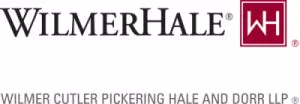- within Environment topic(s)
- with readers working within the Property industries
Recently issued interpretive guidance from the SEC staff offers some answers for companies that find themselves having to decide whether and when to check one or both of the boxes on Form 10-K related to financial restatements and compensation recovery ("clawbacks").
As a quick reminder, the first checkbox ("Box 1") asks whether the company had to correct errors to previous financial statements. The second checkbox ("Box 2") asks whether a corrected error indicated by checking Box 1 prompted a clawback analysis. Whether to check one or both boxes has not been, in many circumstances, as straightforward as it may sound. (See our December 19, 2023 blog post for a refresher on the basic requirements ).
Six new Compliance and Disclosure Interpretations (Exchange Act Forms C&DIs 104.20-104.25) provide guidance, summarized below, that is consistent with SEC staff speeches on the clawback checkboxes since the requirement became effective:
- Out-of-period adjustments don't count. An "out-of-period adjustment" (i.e., when an immaterial prior-period error is recorded in the current period but is not material to the current period) does not require issuers to check either box because previously issued financial statements are not being revised. (See C&DI 104.20).
- Check Box 2 even if no clawback applies. After checking Box 1 to report a financial restatement, if a compensation recovery analysis is triggered, Box 2 must be checked even if a company determines that no clawbacks are required as a result of that analysis. In this scenario, Box 2 must be checked, and an explanation must be given, even if (i) no incentive-based compensation was received by its executive officers in the relevant lookback period or (ii) the incentive-based compensation was not based on the financial metric that was erroneously reported. (See C&DI 104.21).
- Some clawback disclosure may be required more than once. After a company checks the applicable clawback boxes once, the boxes do not need to be checked on future filings assuming no additional restatements. S-K 402(w) disclosure, however, may still be required in certain instances if the restatement occurred "during or after [the issuer's] last completed fiscal year." (See CD&I 104.22, CD&I 104.23).
- The Form 10-K boxes may need to be checked even if the restatement was previously disclosed. Clawback checkboxes must still be checked on a Form 10-K if annual periods were initially restated on another form without the clawback checkboxes (e.g., Form 8-K). (See CD&I 104.24).
- Do not check the clawback boxes for accounting restatements that only impact interim periods. Companies are reminded, however, to include or incorporate by reference the S-K 402(w) executive compensation disclosure from their proxy or information statement, as that disclosure is triggered even for restatements that impact interim periods only. (See CD&I 104.25).
As the above guidance underscores, the clawback checkbox requirements should be analyzed independent from the applicable compensation recovery disclosure required under S-K 402(w) when considering any restatement-related disclosures. In addition, even when a compensation recovery analysis concludes that no clawback is required, a disclosure requirement as to that conclusion remains, which is worth keeping front of mind for any compensation committee administering a clawback policy.
The following table provides a handy summary:
| Change to Financial Statements | Check Box #1 | Check Box #2 |
|---|---|---|
| "Big R" restatements – restatements that correct material errors to previously issued financial statements | Yes | Yes |
| "Little r" revisions or restatements – restatements that correct immaterial errors to previously issued financial statements, but would result in a material misstatement if (a) the errors were left uncorrected in the current report or (b) the error correction was recognized in the current period | Yes | Yes |
| Voluntary restatements – restatements that correct immaterial errors to previously issued financial statements and would not be material if (a) the errors were left uncorrected in the current report or (b) the error correction was recognized in the current period | Yes | No |
| Out-of-period adjustments – an adjustment recorded in the current period financial statements to correct an error when the error is immaterial to the previously issued financial statements, and the correction of the error is also immaterial to the current period | No | No |
Retrospective changes that do not constitute error corrections:
|
No | No |
The content of this article is intended to provide a general guide to the subject matter. Specialist advice should be sought about your specific circumstances.



